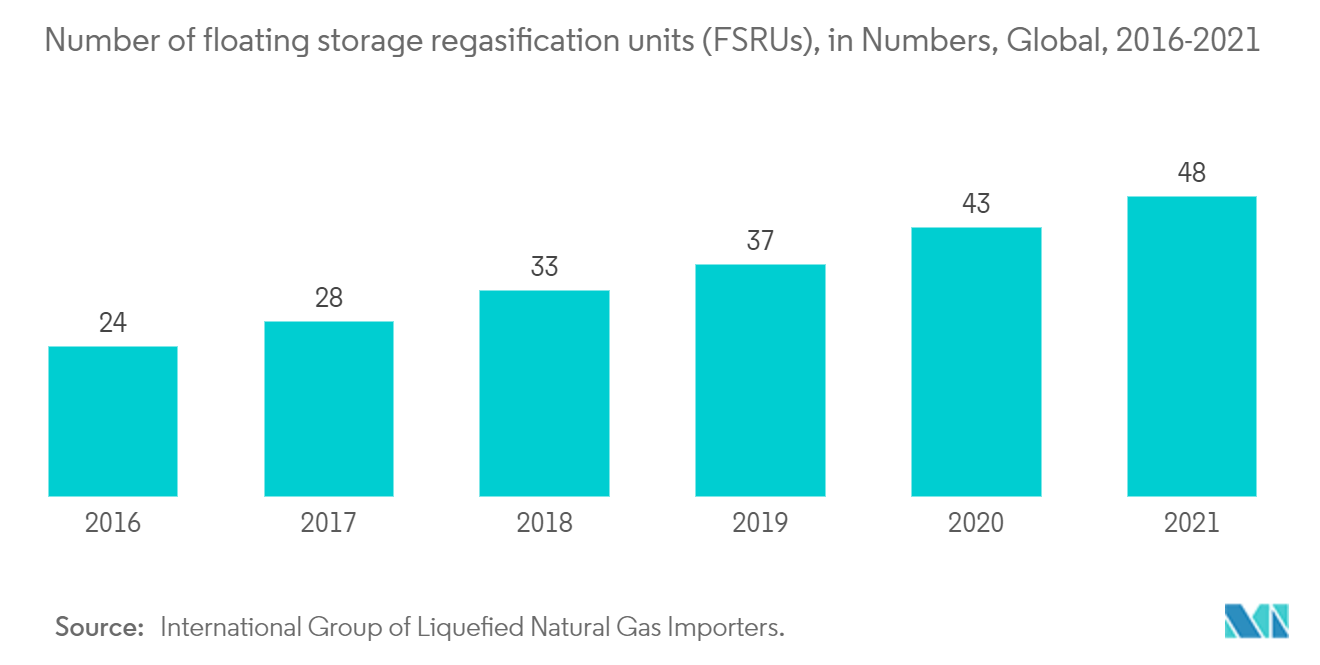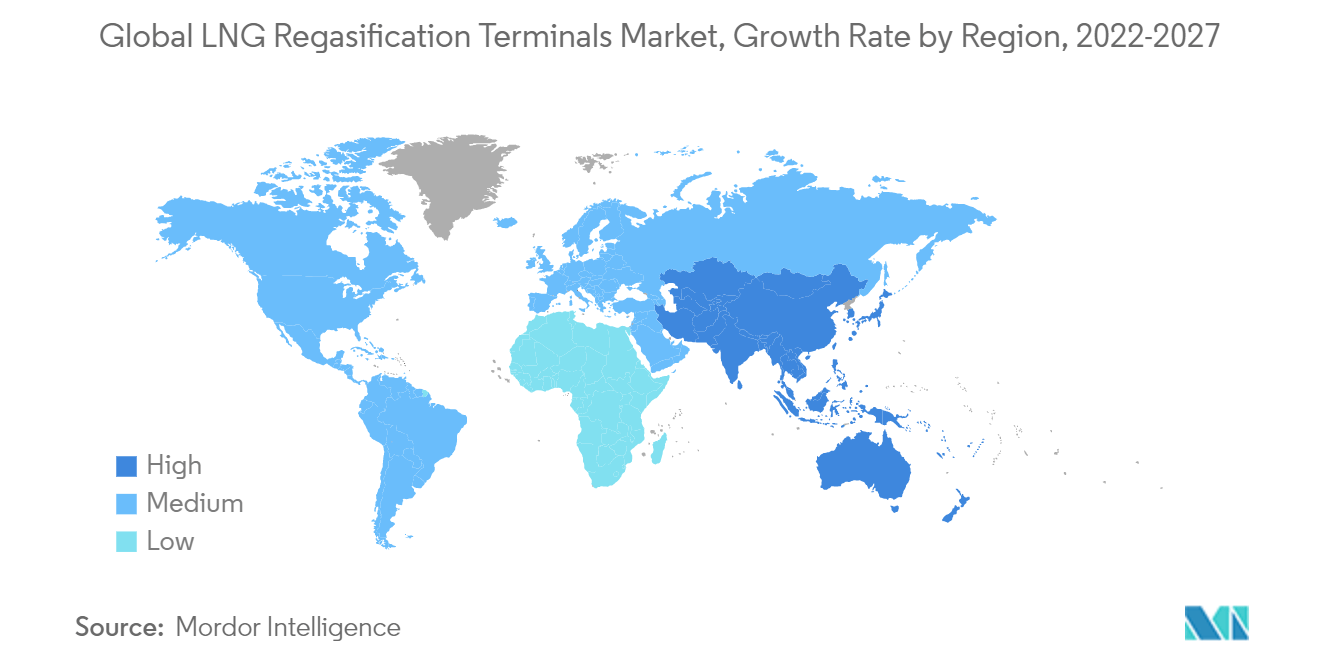Market Trends of Global LNG Regasification Terminals Industry
This section covers the major market trends shaping the LNG Regasification Terminals Market according to our research experts:
The Floating Regasification Terminals Segment is Expected to Dominate the Market
- Floating Storage Regasification Unit (FSRU) is constructed under a leasing contract. Capital expenditure (CAPEX) investment in such projects is much lower compared to what is required in an onshore facility. However, In the long run, it is more profitable to go for an onshore facility as it requires lower maintenance.
- Floating facilities are cheaper to build and, therefore, can become a bridge for entry of developing economies, in the use of natural gas, to provide clean energy to its citizens. The lower price of natural gas, especially after the shale gas boom, has made the market more suitable for developing economies.
- In July 2022, The goverment of india has announced first floating terminal for liquefied natural gas (LNG) at Jaigarh in Maharashtra is expected to be operational in the second half of 2022. The country's first FSRU-based LNG regasification terminal was expected to boost India's RLNG terminal capacity to 51 million (mt) from 45 mt.
- Moreover, in 2021, the Rockstock LNG terminal, floating storage, and regasification unit were proposed in Germany to import LNG with a capacity of 0.3 metric tons per annum. The project is expected to be commissioned by 2023, and it is a way to diversify the energy supply.
- Owing to the above points, floating regasification terminals are expected to dominate the market during the forecast period.

Asia-Pacific is Expected to Dominate the Market
- Asia-Pacific region continued to dominate the market, with approxiametly with 450 MTPA capacity of regasification terminals. Japan and Australia are the leading countries within the region, with 24% of the global regasification capacity, and 19% of the global liquefaction capacity, respectively.
- The addition of Wheatstone LNG and Gorgon LNG in Australia are the prominent large-scale LNG terminals that was added up to the liquefaction infrastructure during 2018. Moreover, the region has added five new LNG regasification terminals, including three in China, one in Japan, and one in Bangladesh.
- The region has almost 40 MTPA proposed liquefaction plants in Asia-Pacific, with Australia as the top LNG player that dominate the region. With high liquefaction capacity, the region has four proposed terminals that are estimated to be large-scale during the forecast period.
- As of 2021, In China, most small-scale liquefaction plants are in major gas and coal-producing areas located domestically in the Northwestern and Central provinces. However, there exist two regasification terminals in Hainan and Fangchenggangwith a capacity of 0.6 million tons per year (MTPA) each.
- Also, Japan has around five regasification terminals that come under the small-scale LNG terminal category. Regasification facilities in Hachinohe, Hatsukaichi, Kagoshima, Minato, and Shin-Sendai are the existing small-scale LNG terminals in Japan.
- Owing to above points, Asia-Pacific is expected to dominate the LNG regasification terminals market during the forecast period.


